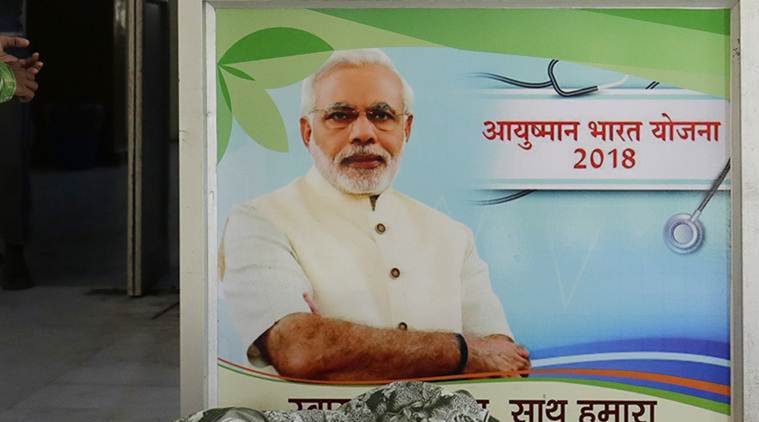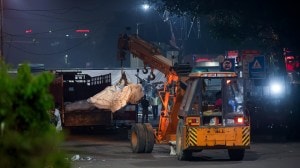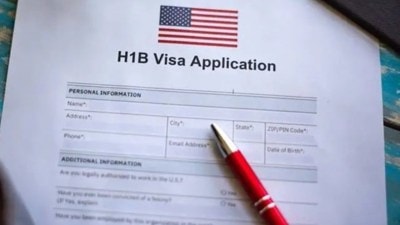Stay updated with the latest - Click here to follow us on Instagram
Ayushman Bharat: 1.53 lakh health and wellness centres by 2022, only 6,000 so far
Since the launch of the first health and wellness centre (HWC) in Chhattisgarh by PM Narendra Modi in April last year, 6,193 HWCs are functional in the country till January 23, and of these, more than 2,500 are in just Andhra Pradesh and Tamil Nadu.
 Progress on HWCs will be reviewed in the PMO on January 30, the third time that the programme will be reviewed in South Block, a far cry from the daily 5 pm updates on PMJAY that are sent to the PMO from the National Health Agency.
Progress on HWCs will be reviewed in the PMO on January 30, the third time that the programme will be reviewed in South Block, a far cry from the daily 5 pm updates on PMJAY that are sent to the PMO from the National Health Agency.
The preventive healthcare arm under the Ayushman Bharat scheme has been relegated to the background with the proposed health and wellness centres (HWC) set up so far being well below the government’s target.
Since the launch of the first HWC in Chhattisgarh by PM Narendra Modi in April last year, 6,193 HWCs are functional in the country till January 23, and of these, more than 2,500 are in just Andhra Pradesh and Tamil Nadu.
Functionality means there is a mid-level health provider/medical officer, trained frontline workers, free essential drugs and diagnostics, and screening for common non-communicable diseases (NCDs) at these centres. A total of 10,000 are functional to some extent but the number is well below the target of 15,000 that the health ministry had set for 2018-19. The ministry aims to set up 1,53,000 HWCs by 2022.
Progress on HWCs will be reviewed in the PMO on January 30, the third time that the programme will be reviewed in South Block, a far cry from the daily 5 pm updates on PMJAY that are sent to the PMO from the National Health Agency.
West Bengal, which recently opted out of PMJAY after a political row over a photo of PM Modi in ayushman bharat scheme, narendra modi, health care, health and wellnes centre, pmjay, national helath agency, indian express newsthe letters to beneficiaries, has no HWC. Neither does Delhi which has chosen to stay out of PMJAY over a dispute over branding.
A senior health ministry official said, “We are hopeful that by the end of this month, 9,000 will be completed. By the end of the financial year, we will meet the target of 15,000 HWCs. Even as we speak, the first batch of close to 4,000 mid-level workers will be graduating from IGNOU and that would help in manning some more centres. The target for next year is 25,000. We will have all 1,53,000 in place by December 2022.”
However, if the progress in the first year is any indication though, 1,53,000 HWCs could take upward of 10 years.
HWCs will provide comprehensive maternal healthcare services at “delivery points”, including neonatal and infant health care services, childhood and adolescent healthcare, contraceptive services, reproductive healthcare, management of communicable diseases, screening and comprehensive management of non-communicable diseases, basic ophthalmic care services, basic ENT care, screening and basic management of mental health ailments, basic dental health and geriatric health care.
The functional HWCs have so far screened 44,08,046 individuals for hypertension, 36,75,828 for diabetes, 36,44,753 for oral cancer, 28,15,865 for breast cancer and 15,46,899 women for cervical cancer. The detected incidence of the diseases is 0.08% for hypertension, 0.09% for diabetes, 0.19% for oral cancer, 0.72% for breast cancer and 0.9% for cervical cancer.
A mere Rs 1,200 crore being allocated for the plan has been one of the persistent criticisms of the government, and an additional Rs 800 crore has now been approved. The total estimated cost for each centre is about Rs 15 lakh.
The health ministry has tied up with IGNOU for Programme Study Centres (PSCs) for training of mid-level health providers and 223 PSCs have been launched so far.
Meanwhile, a study conducted by IIT-Madras in the HWC pilot district in Tamil Nadu showed a drastic reduction in out of pocket expenditure (OOPE) incurred by the patients. In the pilot blocks, the OOPE was as low as Rs 3 per outpatient visit.







